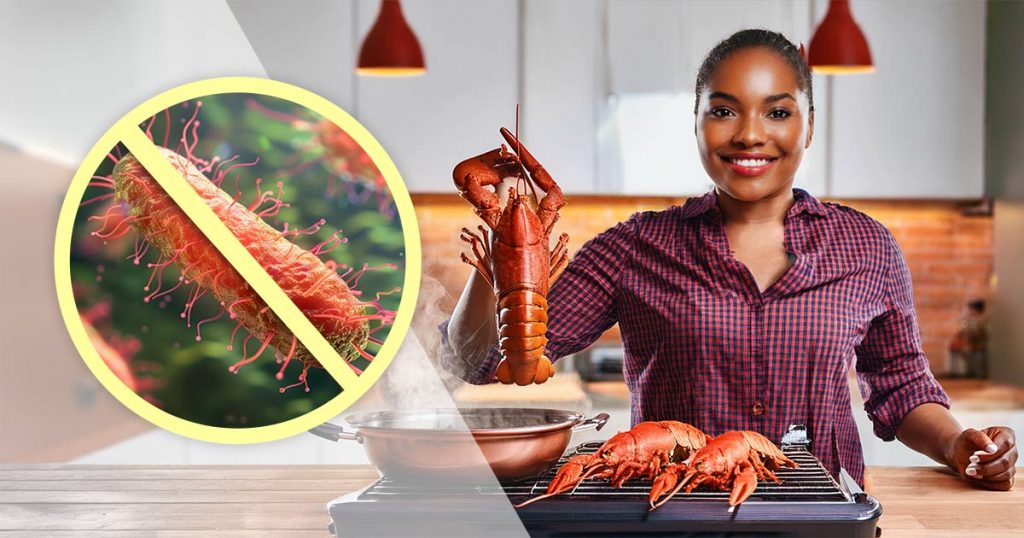Listeria monocytogenes is a harmful bacterium that can cause foodborne illness, especially in pregnant women, newborns, older adults, and those with weakened immune systems. Unlike many bacteria, Listeria can survive and even grow at refrigerator temperatures, which makes it particularly dangerous. Cooking food to the right temperature is one of the most effective ways to eliminate Listeria and prevent illness.
What is Listeria and Why is it Dangerous?
Listeria is a type of bacteria commonly found in soil, water, and some animals, including livestock. It can easily contaminate food during processing, handling, or storage. Unlike many other bacteria that thrive in warm conditions, Listeria can grow in cold environments, including refrigerated foods. This makes it a major concern for ready-to-eat foods such as deli meats, soft cheeses, and refrigerated smoked seafood.
Infection with Listeria, called listeriosis, can lead to severe symptoms such as fever, muscle aches, nausea, and diarrhea. In more serious cases, it can cause meningitis, blood infections, and even miscarriages or stillbirths in pregnant women. The high fatality rate among vulnerable groups makes Listeria a significant public health risk.
How Cooking Can Eliminate Listeria
Heat is one of the most effective ways to kill Listeria. Cooking food to the proper internal temperature destroys harmful bacteria and makes food safe to eat. The U.S. Department of Agriculture (USDA) and the Centers for Disease Control and Prevention (CDC) recommend the following cooking temperatures:
- Poultry (whole or ground): 165°F (73.9°C)
- Ground meats (beef, pork, lamb): 160°F (71.1°C)
- Whole cuts of meat (steaks, roasts, chops): 145°F (62.8°C) with a three-minute rest time
- Fish and seafood: 145°F (62.8°C)
- Leftovers and casseroles: 165°F (73.9°C)
Using a food thermometer ensures food reaches the right temperature. Visual cues, like color changes or juices running clear, are not always reliable in determining if food is fully cooked.
Safe Food Preparation and Handling
Proper cooking is important, but food safety starts long before turning on the stove. Safe handling and preparation can prevent Listeria contamination and reduce risks:
Clean Hands and Surfaces
Bacteria spread easily through dirty hands and kitchen surfaces. Wash hands with soap and warm water for at least 20 seconds before and after handling food. Disinfect kitchen counters, cutting boards, and utensils regularly.
Separate Raw and Cooked Foods
Cross-contamination happens when raw meat, poultry, or seafood touches ready-to-eat foods like vegetables or bread. Use separate cutting boards for raw meat and other foods. Store raw meats in sealed containers away from fresh produce in the fridge.
Proper Refrigeration and Storage
Listeria can grow in cold temperatures, so refrigeration alone isn’t enough to kill it. Keep the refrigerator at or below 40°F (4°C) and the freezer at 0°F (-18°C). Store leftovers in airtight containers and eat them within three to four days. Avoid consuming expired or spoiled foods.
High-Risk Foods and How to Handle Them
Some foods are more likely to be contaminated with Listeria. Proper handling and preparation can reduce risks:
Deli Meats and Hot Dogs
These products are often pre-cooked but can be contaminated after processing. Heating them to 165°F (73.9°C) before eating is the safest option.
Soft Cheeses and Unpasteurized Dairy
Soft cheeses like feta, brie, and blue cheese made from unpasteurized milk may contain Listeria. Choose pasteurized options to lower the risk.
Refrigerated Smoked Seafood
Cold-smoked fish like lox can carry Listeria unless it is cooked or part of a fully cooked dish.
Pre-Packaged Salads and Sprouts
Ready-to-eat salads, including those with chicken or seafood, and raw sprouts can be risky. Washing produce thoroughly and cooking sprouts can help eliminate bacteria.
Leftovers and Prepared Foods
Reheating leftovers to 165°F (73.9°C) before eating ensures safety. Avoid eating refrigerated leftovers beyond their recommended storage time.
Cooking Methods That Kill Listeria
Different cooking methods can effectively kill Listeria, as long as food reaches the recommended internal temperature. Here are some common methods:
Baking and Roasting
Baking and roasting are great for cooking meats, poultry, and casseroles. Preheating the oven and using a meat thermometer ensures food reaches a safe temperature.
Boiling and Steaming
Boiling is useful for soups, stews, and pasta dishes. Steaming works well for vegetables and seafood. Both methods involve high heat that destroys bacteria.
Grilling
Grilling at high temperatures effectively kills bacteria, but it’s important to cook meat evenly. Using a thermometer helps confirm doneness.
Frying and Sautéing
Cooking food in hot oil at high temperatures can quickly eliminate Listeria. Ensure thick cuts of meat or poultry cook thoroughly on the inside.
Microwaving
Microwaving can kill Listeria, but uneven heating can leave bacteria alive in certain spots. Stirring and letting food sit for a minute after microwaving helps ensure even heat distribution.
Preventing Re-Contamination After Cooking
Even if food is cooked properly, Listeria can return through improper handling. Prevent re-contamination by:
- Storing cooked food in clean, airtight containers
- Using separate utensils for cooked and raw foods
- Washing hands after handling raw meat
- Keeping the fridge clean and at the correct temperature
Symptoms and Treatment of Listeriosis
Listeriosis symptoms vary based on a person’s health. Healthy individuals may only experience mild flu-like symptoms, but those with weakened immune systems can develop serious infections. Symptoms include:
- Fever and chills
- Muscle aches
- Nausea and diarrhea
- Headache and stiff neck (in severe cases)
- Confusion or loss of balance
Pregnant women may only experience mild symptoms, but the infection can lead to miscarriage, premature birth, or serious illness in newborns. Antibiotics are used to treat severe cases, especially in vulnerable individuals.
Proper Cooking is Key to Food Safety
Cooking food to the right temperature is one of the best ways to eliminate Listeria and prevent foodborne illness. Along with safe food handling, proper refrigeration, and awareness of high-risk foods, these practices help keep meals safe. Using a food thermometer and following recommended guidelines makes a big difference in reducing health risks. Staying informed and making smart choices in the kitchen helps protect against Listeria and other foodborne bacteria.
